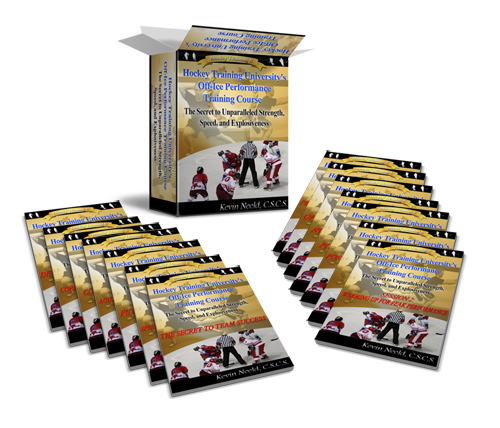If you missed, Monday’s post, check it out before reading this one.
Off-Season Hockey Leads You to Surgery?
The idea that being on the ice year-round could actually impair your development shocks a lot of people. For whatever reason, it’s been DRILLED into our minds that we need to skate, hard, year-round. This mentality has really exploded over the last 10-15 years. It’s no coincidence that we hip flexor and adductor (“groin”) strains, and sports hernias are at an all-time high now at the more elite levels of hockey.
Let me clear things up about what hockey players should be doing in their off-season to maximize their development.
Should Hockey Players Skate in the Off-Season?
Many hockey players make the fatal mistake of spending the entire off-season on the ice. Most players are on the ice for 4+ hours per week during the increasingly long season. It is ABSOLUTELY crucial that they start their off-season by taking a break and doing some things to reverse the physical adaptations that result from so much skating (e.g. foam rolling and stretching the glutes and hip flexors). After a month or so of NO ice time, players can skate within this context:
1) Power Skating Instruction: Avoid the coaches that just run you through drills and watch. Find a coach that will actually teach you technique and actively help you improve your mechanics. There should also be a focus on edge control, not just overspeed work.
2) Skill Instruction: While I don’t think it’s completely necessary to be on the ice to do this, many players can make huge improvements in their hands in an off-season by spending some time practicing handling a puck on all sides of their body and with specific footwork/bursts of speed (which is why skating instruction is so crucial!).
3) Specific Summer Leagues: Many players feel stale if they don’t play some sort of game for 6 months. If you can find a decent league (competition equal to or better than what you’re used to) that plays a 6-10 game schedule toward the end of the Summer, then hop right in. Playing in a showcase tournament or two throughout the Summer isn’t going to kill you, but you should not be playing tournaments ALL off-season!
The mistake players (and parents) make is that they finish their season, then immediately register for spring and summer league and as many clinics as they can. It’s too much. Think QUALITY here, not quantity.
The adverse effects of this are becoming increasingly clear: As the year-round hockey craze infects younger players, we see high level hockey injuries spreading to all age levels. There is NO reason why peewees and bantams should have chronic groin and hip flexor pain! I’m not preaching here. I made all the mistakes myself, and I have the double hernia surgery and inevitable hip arthritis to prove it!
Off-Season Training
Following a structured, well-designed training program during the off-season can completely transform a player’s career, especially at the youth levels. There is a critical time period during development when the body is highly “malleable”. If you create the right training stimulus, your body is primed for a long career of explosive movement. Unfortunately, creating the wrong training stimulus will prime your body to stay slow and weak.
A good off-season hockey training program serves three major purposes:
1) Improve performance
2) Decrease injury risk
3) Improve stress handling capacity
Players should leave the Summer faster, stronger, and better conditioned than they’ve ever been in the past and eager to get on the ice. THAT is how every player should enter the season!
To your success,
Kevin Neeld
P.S. Last week I was fortunate to speak with Jim Snider, the Wisconsin Hockey Strength and Conditioning Coach, for a few minutes. To my surprise, he mentioned he’s been using a lot of the hip mobility drills in my Off-Ice Performance Training Course! He mentioned, and I agree, that hockey players should use those specific exercises to help maintain the range of motion around their hips they need to be successful on the ice and to decrease their injury risk. If you haven’t yet, check it out now!




 Use CODE: "Neeld15" to save 15%
Use CODE: "Neeld15" to save 15%